How to shade a digital drawing on PC
Similar whatever traditional drawing medium, digital illustrations and styles can vary greatly between each artist. Some prefer the look of soft blends, while others are content with the hard-edged comic book aesthetic of cel-shading. Even still, others fall somewhere in between. Considering there are and so many variables in how to shade, we're going to trim down to the basics hither.
Before getting started...
I'll be using Corel Painter 2022 for my painting software, simply whatever other Windows PC drawing app with layer functionality should piece of work just as well. Yous'll also need a digital drawing device, either a tablet or pen display unless you are confident drawing with a mouse.
Whether you cel shade, soft shade, or find a happy medium with both methods, the most important footstep is planning where the light sources volition be in your illustration. To help visualize where your lite sources are, endeavour adding a new layer and draw arrows pointing in the direction your light will exist traveling.
Since the arrows are on their own layer, you lot can toggle the visibility on or off. The points of your analogy closest to the light source are your highlights, and typically your shadow volition exist the opposite. Even so, it is important to remember that light can bounce around and reflect even to the shadowy side of your subject.
How to cel shade
Cel shading, or 'toon shading,' is a mutual illustration technique for shading comics, animations, and fifty-fifty some video games. The shadows and highlights in an image are simplified down to a couple of colors and blocks for accent with cel-shading. It also happens to be i of the easiest ways to practise adding shading to your images; information technology forces you to think near low-cal placement in your scene, and so your highlights and shadows have the most affect.
- Open up your painting software. I'll be using Corel Painter 2022, just the process is similar regardless of your software choice.
-
Open a new, blank canvas. You can use the bill of fare by clicking File, and so New, or keyboard commands (CTRL + North) to open up a canvas. Your sheet settings are entirely up to y'all. I like to work large, and then I'll be choosing 5000x5000 pixels at 300dpi.
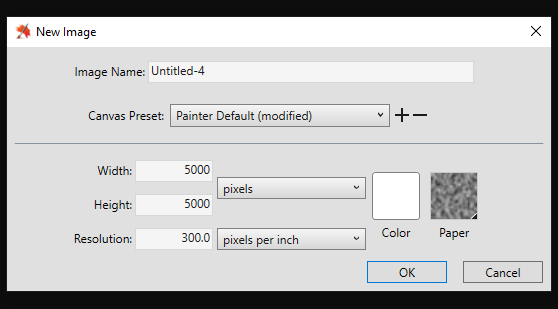 Source: Windows Central
Source: Windows Central -
Choose your preferred brush. I'll be using the Thick & Thin pen.
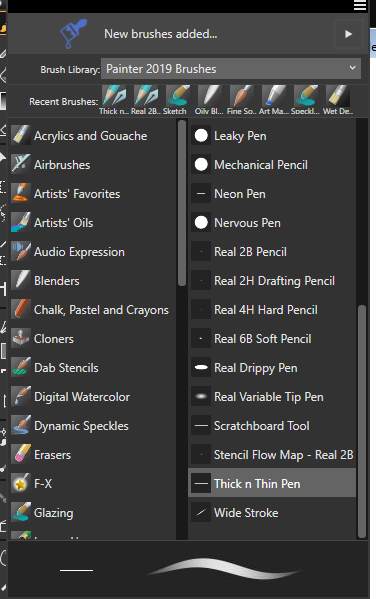 Source: Windows Central
Source: Windows Central -
Create a new layer. This tin be washed from the Layers drop down on the menu bar, or pressing CTRL+SHIFT+N on your keyboard.
 Source: Windows Central
Source: Windows Central -
Create the line art for your analogy. Showtime with a uncomplicated sketch, and then continue refining your lines until your image looks the way you want.
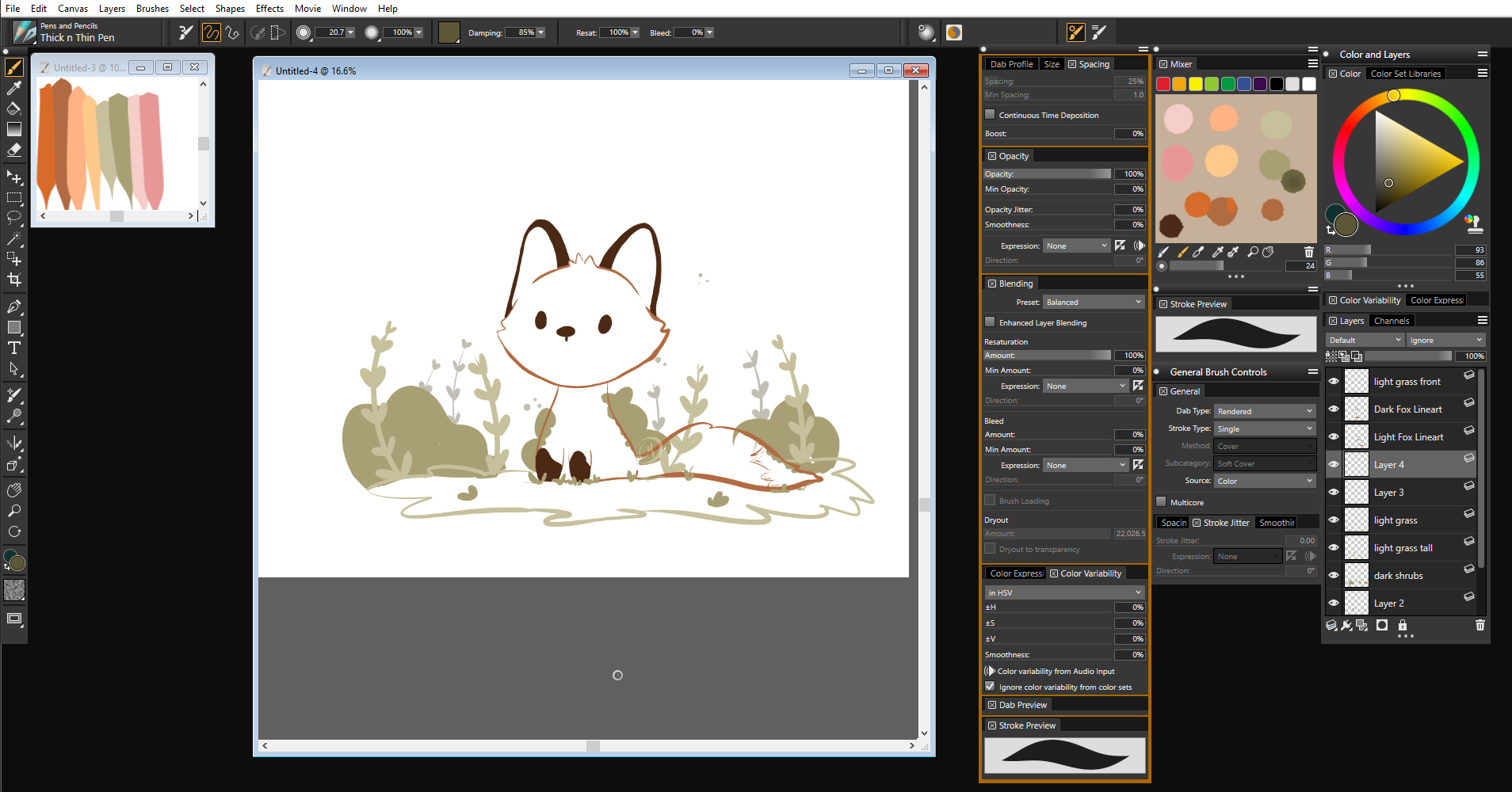 Source: Windows Primal
Source: Windows Primal - Add a new layer, making certain to place it nether the line art layer(s).
-
Add together your flat color blocks. The best practise is to dissever colors of different elements in your image onto different layers.
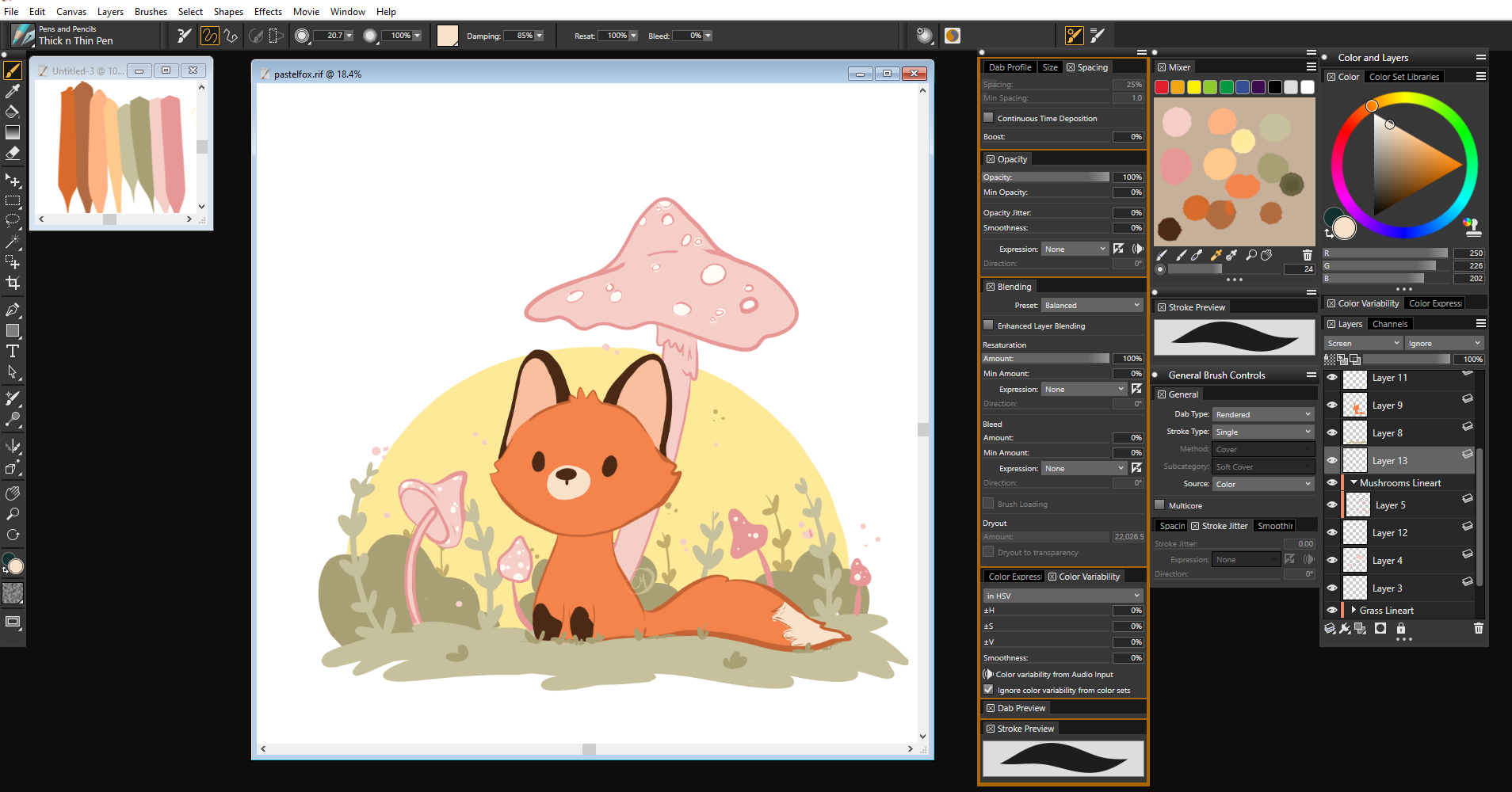 Source: Windows Central
Source: Windows Central - Time to add another layer.
-
Find a complimentary cool color for your palette.
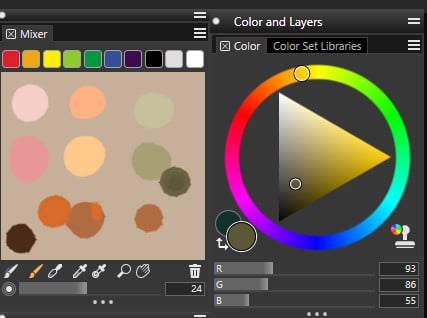 Source: Windows Central
Source: Windows Central -
Consider the location of your lighting sources.
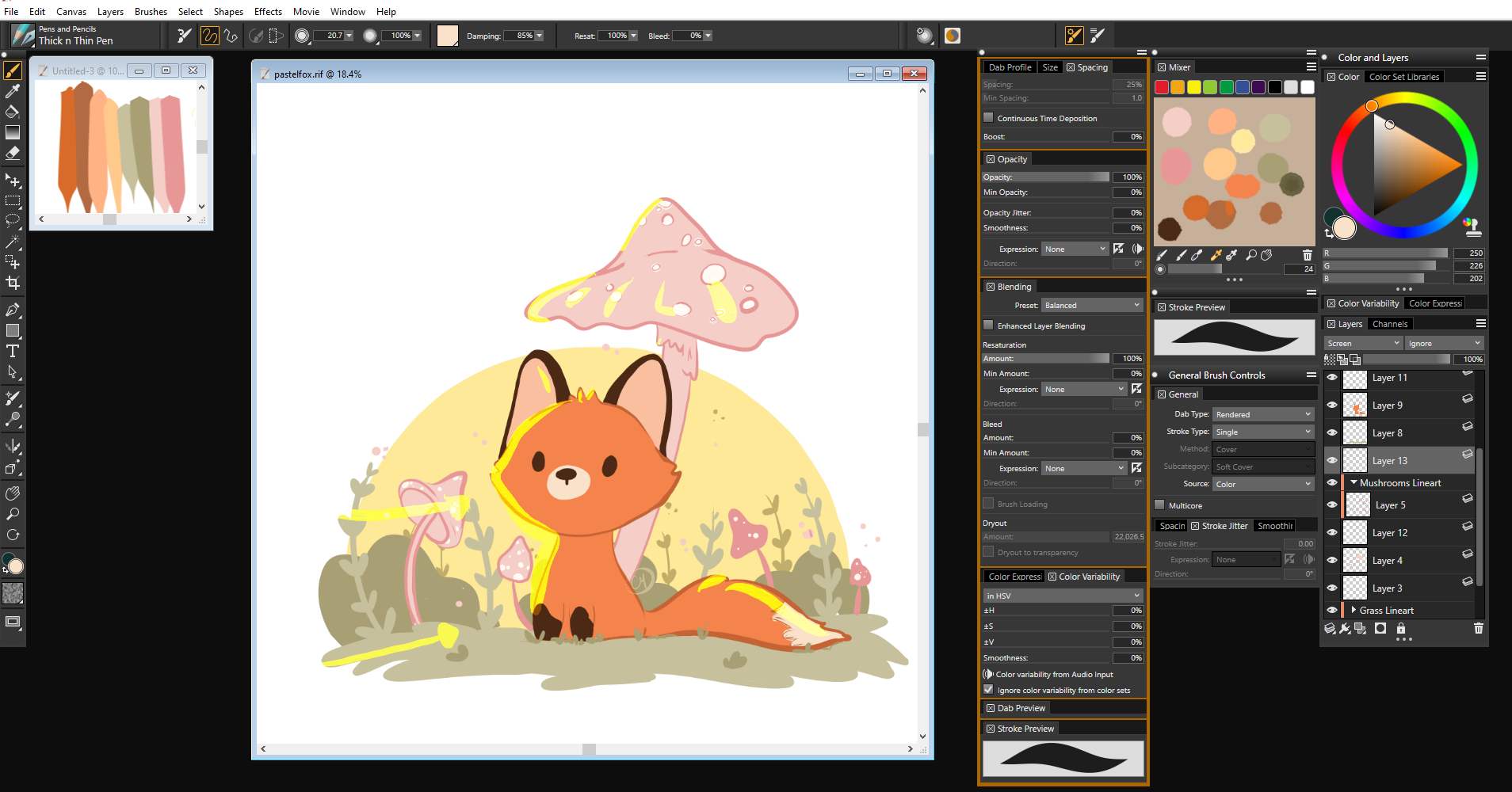 Source: Windows Central
Source: Windows Central - Use your castor tool to add your cool color to shaded areas. While thinking about where your lighting will hit your subject, lay downwardly your cool color on the opposite areas darkened past shadow. If your calorie-free is coming from the left, for example, your shadows will autumn more on the right.
-
Adjust your shadow layer'southward alloy mode to multiply. The multiply alloy mode adjusts the way that shadow color blends with the colors underneath it.
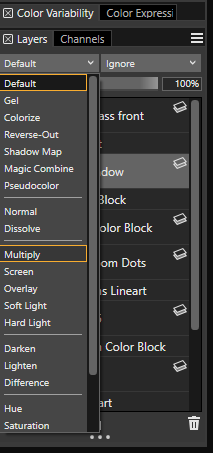
 Source: Windows Primal
Source: Windows Primal - Adapt your shadow layer'southward opacity. Lowering the shadow layer's opacity allows more of the layers beneath it to be more visible. More opaque layers pb to darker, more dramatic shadows.
-
Add together a highlight past repeating the previous steps with a warm color.
 Source: Windows Fundamental
Source: Windows Fundamental
Adding highlights is a similar process to calculation shadows only with a few minor changes. Nosotros're going to add together a new layer, cull a complimentary warm color, and add information technology to the points where the calorie-free will striking the subject direct. Instead of setting our layer blend fashion to Multiply, we're going to choose Screen from the driblet-down.
Just like earlier, we're going to adjust the opacity until we're satisfied. Sometimes it may exist beneficial to add additional white hot spots to really gear up a highlight off. Still, try not to overdo it every bit you could end up making your epitome's surface look shiny or wet with likewise many. If you're looking for the hard-line cel shading wait, yous can cease later your highlights.
How to blend for soft shading
If you're looking for a more than realistic render for your digital illustration, you may want to choose soft shading over cel. In addition to the increased realism that soft shading offers, it likewise gives y'all a piddling more than freedom to play with lighting and how it affects the subjects in your illustration.
Because we're going for a more painterly look, I'1000 going to choose various acrylic and glazing brush tools. The tools you have available will vary with your software option and your personal preference for style.
- Open your painting software and a new, blank canvas.
-
Choose your preferred brush.
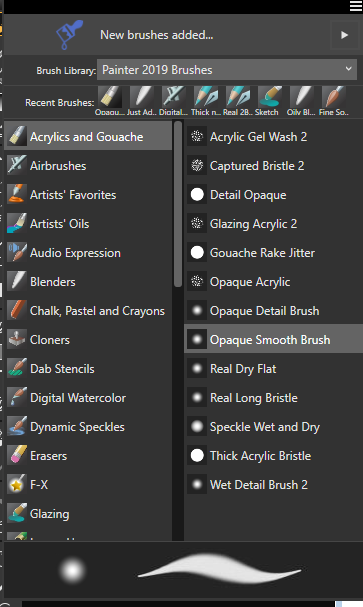 Source: Windows Fundamental
Source: Windows Fundamental -
Add together your line fine art.
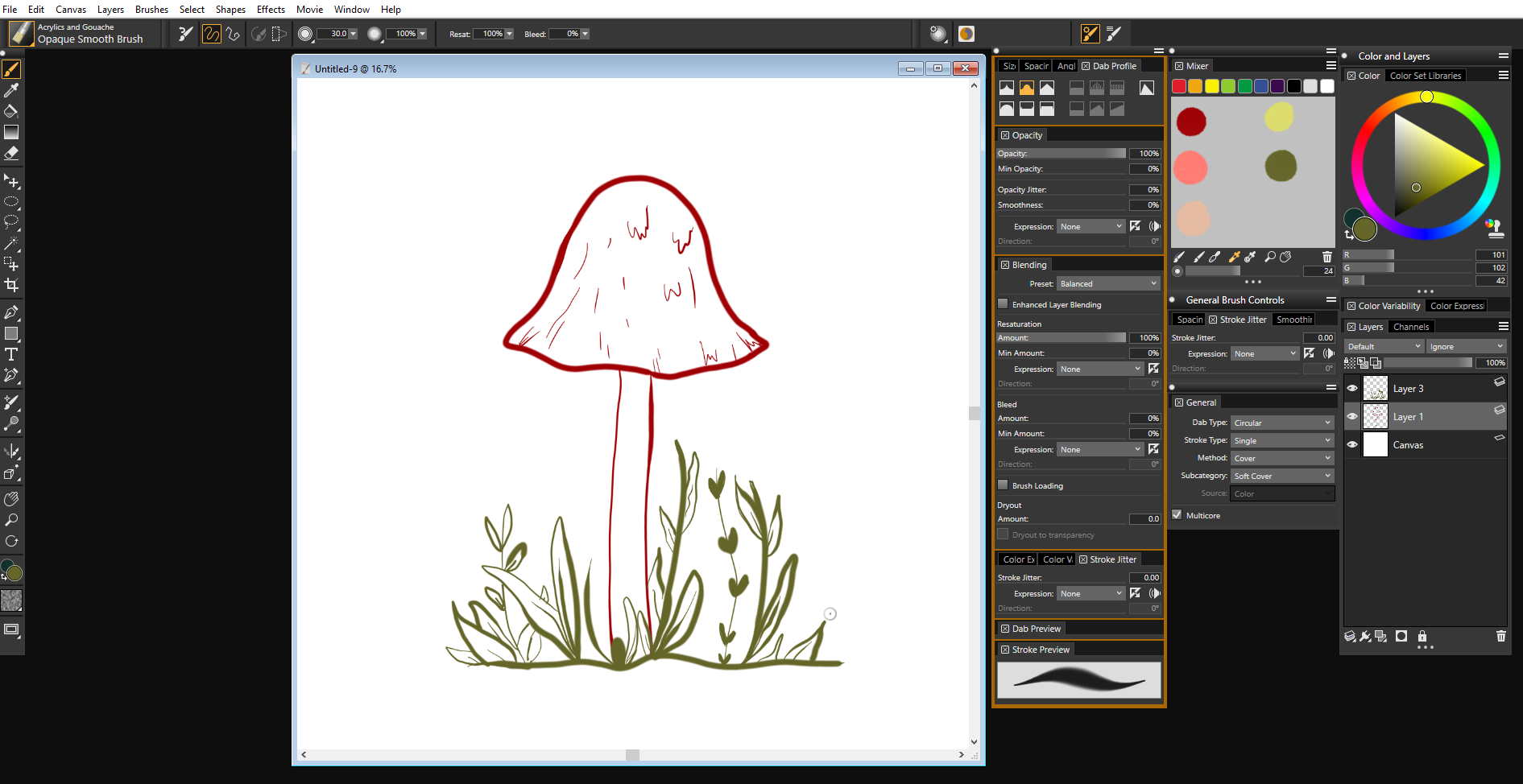 Source: Windows Central
Source: Windows Central - Add together a new layer.
- Choose a complimentary absurd colour.
-
Add in your shadow colour much like you lot would with cel shading.
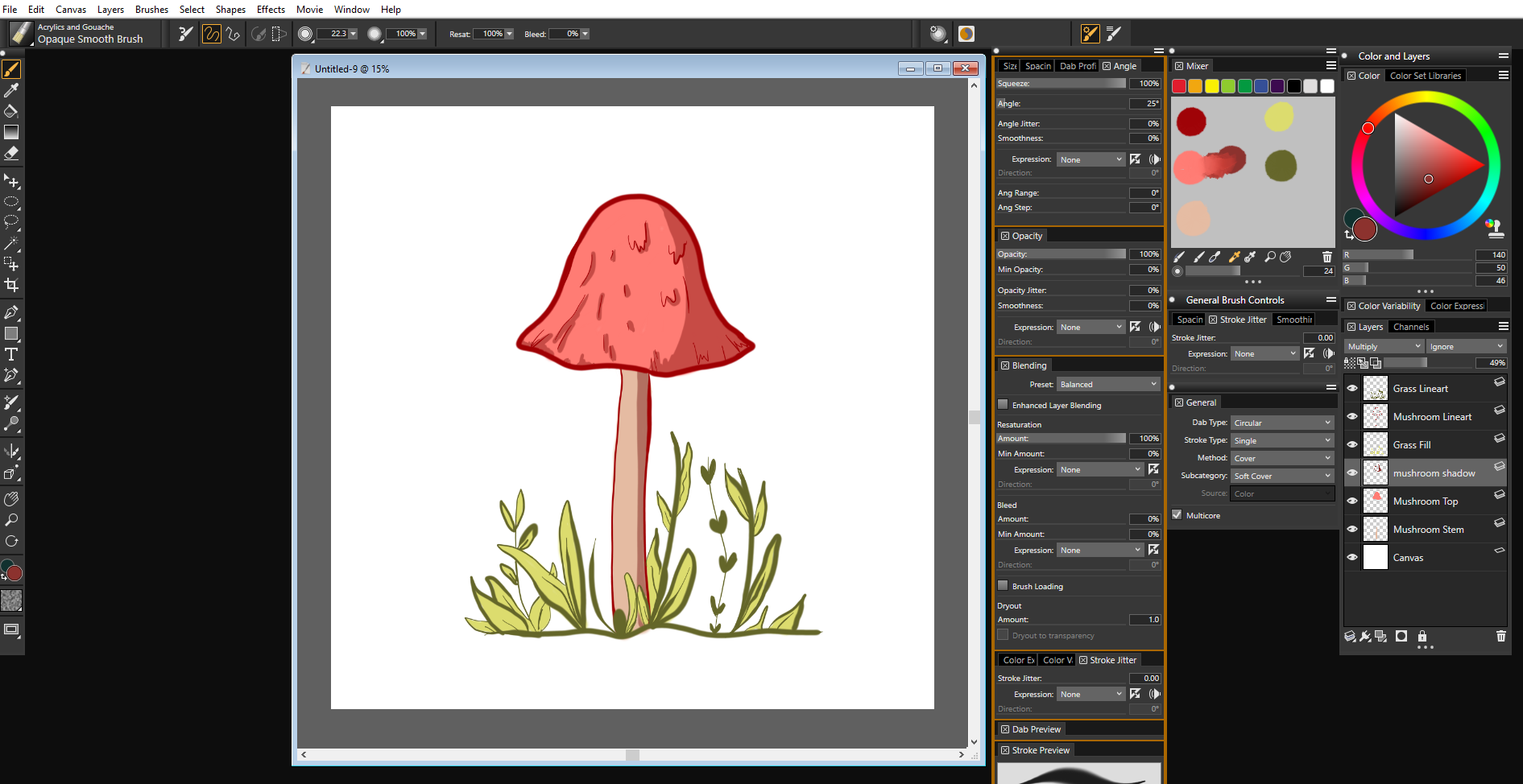 Source: Windows Central
Source: Windows Central -
Using the Mixing Palette, add your flat color and shadow colors side by side and blend them together with the palette knife tool.
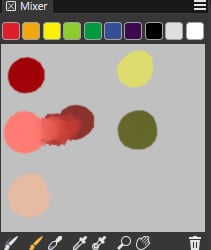 Source: Windows Central
Source: Windows Central - Use the color picker tool to pick up the color mixed from your flat and shadow color.
-
On its own layer, Add the blend color, partially overlapping the flat colour and shadow layers.
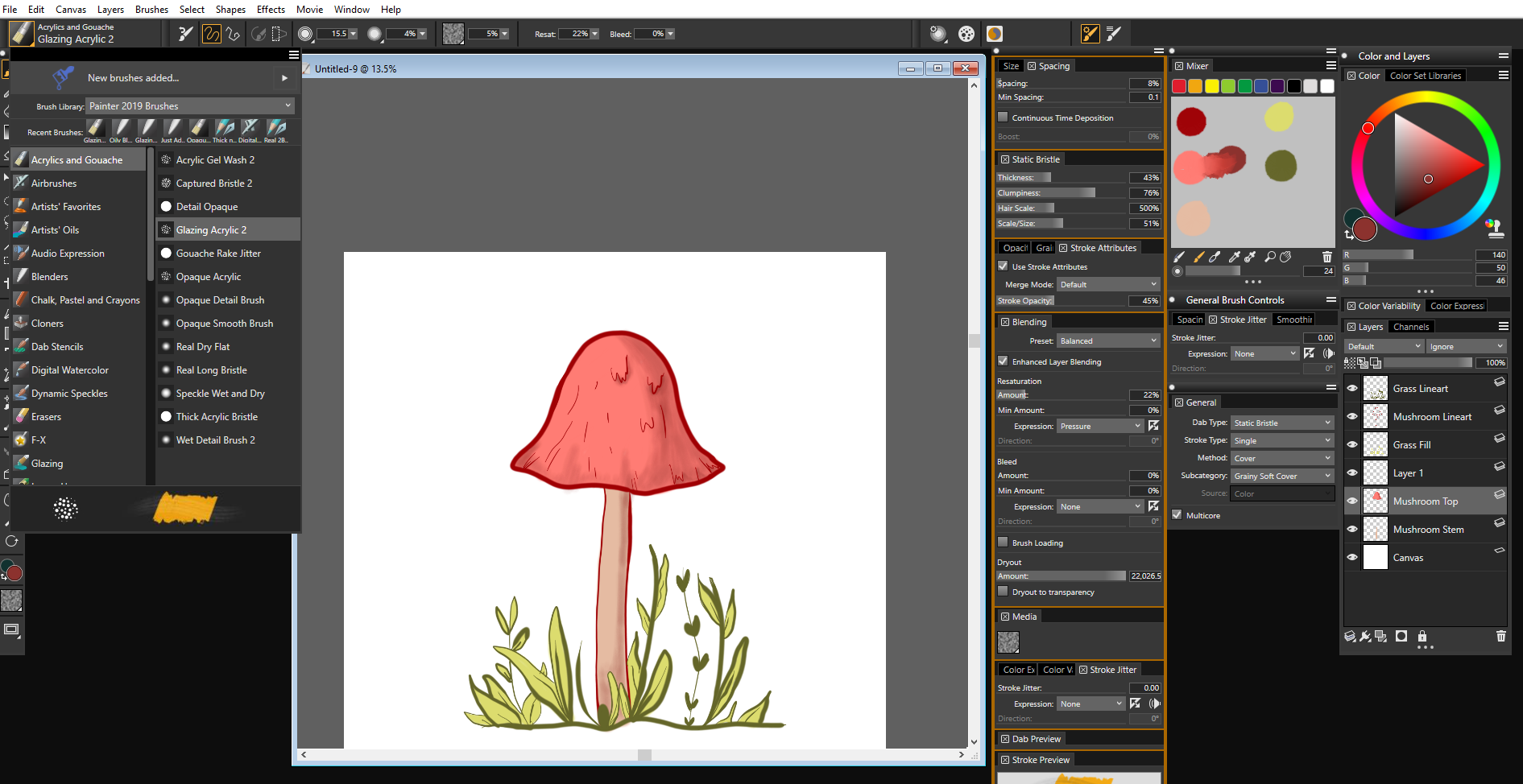 Source: Windows Central
Source: Windows Central -
Select your preferred blend tool from the brush tool palette.
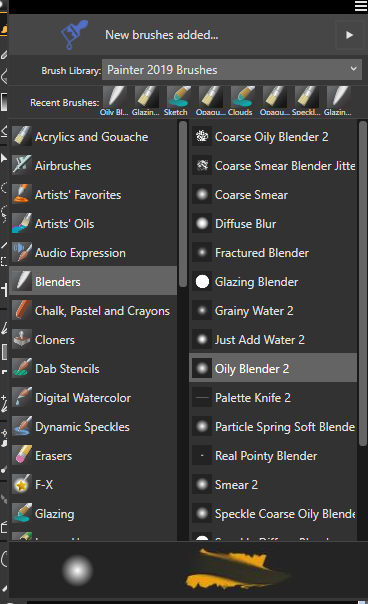 Source: Windows Central
Source: Windows Central - Employ the blender castor to create a soft slope from the flat to the shadow colour.
-
Repeat these steps with a complimentary warm color to create highlights. Like with cel shading, however, you'll want to set up your layer mode to screen instead of multiply.
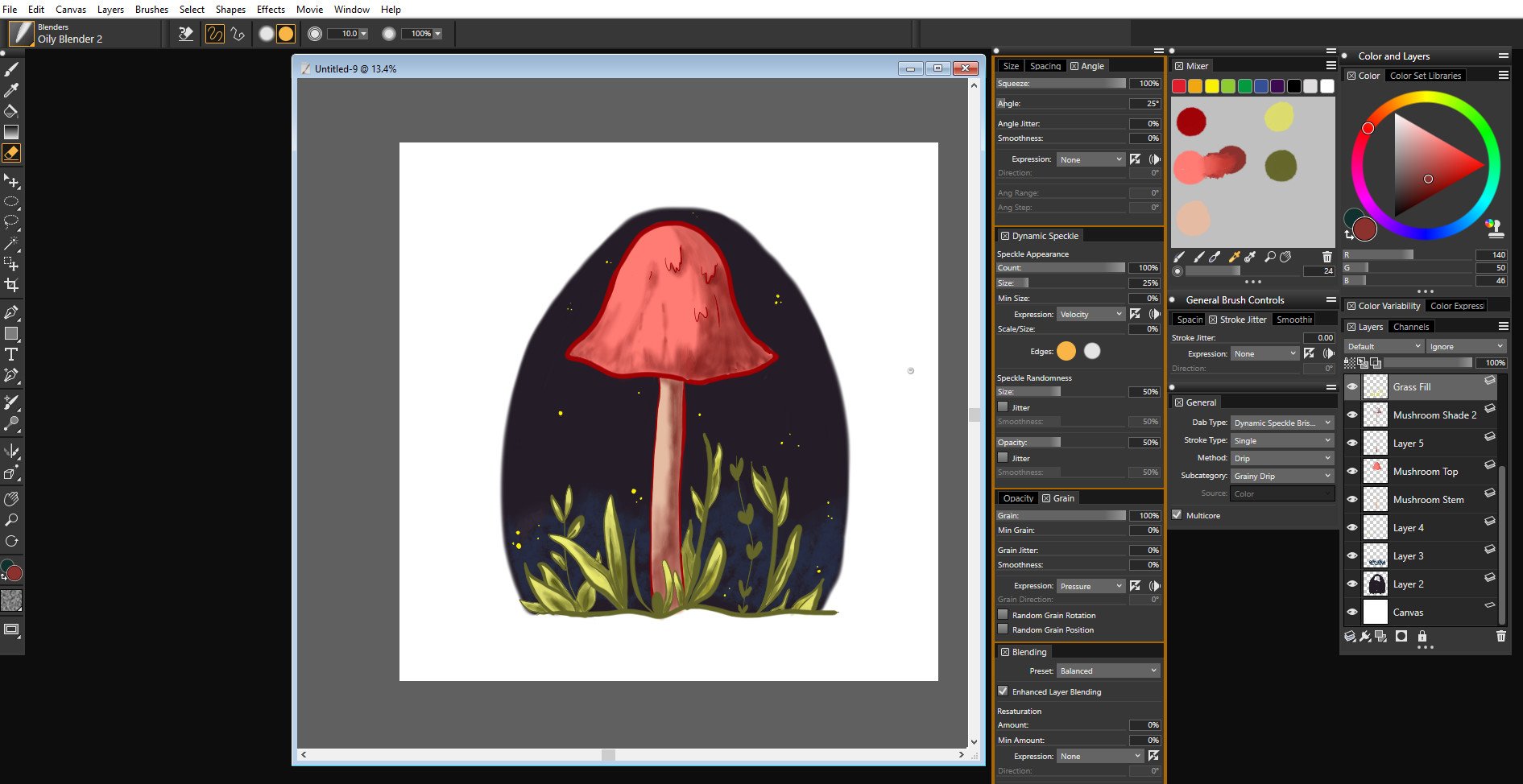 Source: Windows Central
Source: Windows Central
Soft shading typically results in a smoothly composite gradient that contrasts to the hard edges of cel shading. This lends itself to a more realistic and painterly analogy and adds some extra freedom for playing with the manner light interacts with the subject you've painted. Despite the differences between the two shading styles, it'southward not uncommon for digital artists to apply both in the same painting.
Create your way
While both techniques will get you started shading your digital illustrations, neither is the definitive way to go well-nigh it. They're simply foundations for you to build your own creative fashion with. Everything from the brushes you lot use to how many layers you add together to get the right amount of shadow can alter your finished piece. Be brave and make bold strokes.
The beauty of digital fine art is the ability to modify your direction as you encounter fit, and so endeavor out neon dark-green for a shadow or that bright orange highlight. If you're dissatisfied, changing it equally uncomplicated as using a flood fill to recolor your shadow or highlight layers. I didn't bear upon color theory in this commodity, just having a bones grasp of how colors piece of work with one another and their effect on lighting and shading can be one of the most effective methods for improving your shading.
Useful tools of the merchandise
There are plenty of artists out at that place who can create beautiful illustrations with Microsoft Paint and a standard mouse. I, personally, am not that kind of creative person. If yous find yous're non that kind of artist either, you might desire to consider adding a skillful pen display and drawing software to your artistic toolbox.
Pen Display
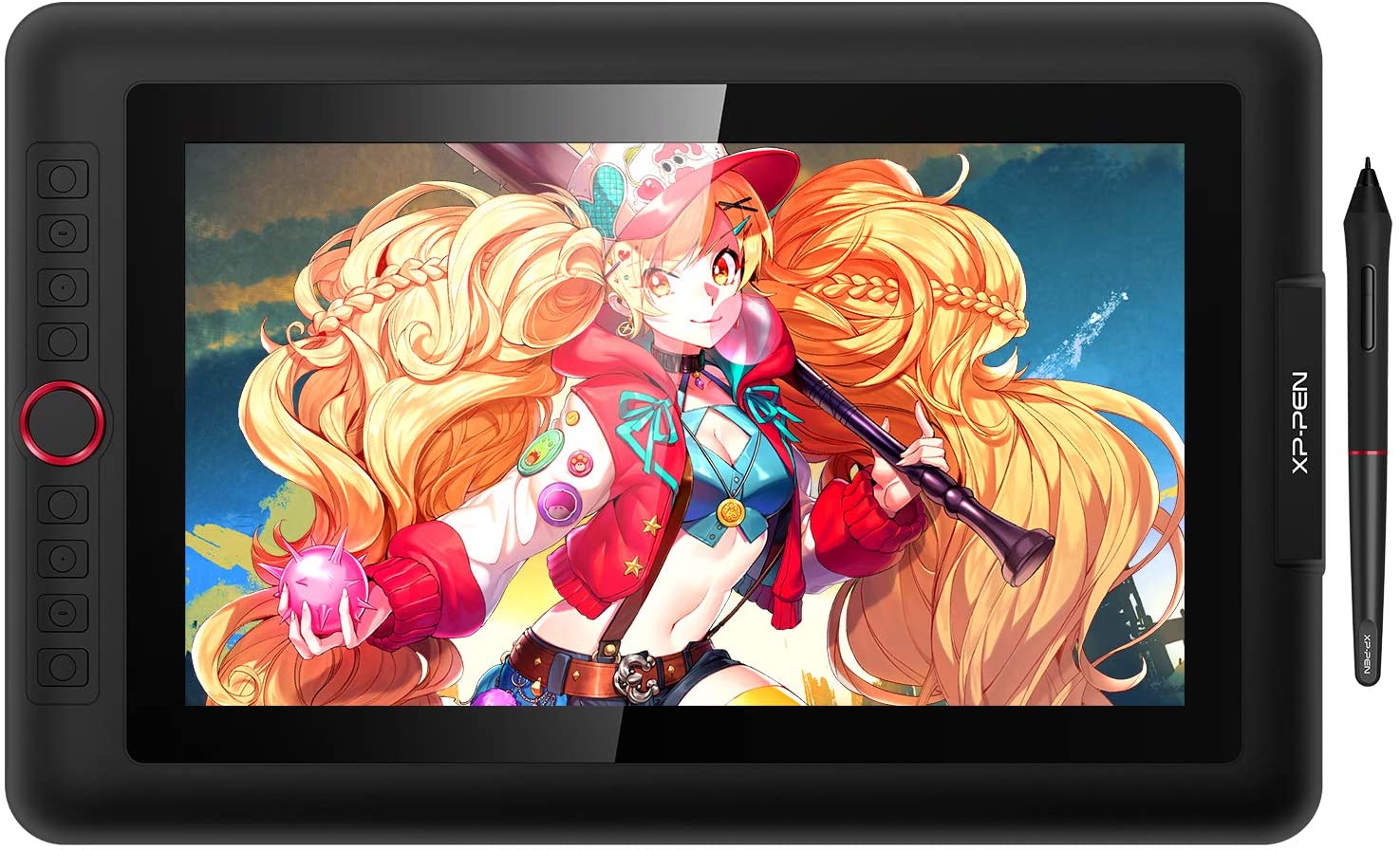
XP-Pen Artist thirteen.3 Pro Pen Display
Budget-friendly cartoon tablet
If you're transitioning from traditional to digital art, training yourself to depict on a digitizer while looking elsewhere at a divide screen tin can prove hard. Using a built-in pen display gives you lot the freedom to put your pen directly on your workspace. XP-Pen'south Creative person 13.3 Pro display is one of the most affordable cartoon monitors on the market, but it comes packed with a lot of bells and whistles of its college-end competitors.
Boosted Equipment
While technique tin can go y'all a long manner with traditional art regardless of tools, digital art success requires the correct toolset. I've mentioned before that some artists tin can draw solely with their computer's standard USB mouse or even their laptop's trackpad. These devices, however, exercise not offer pressure level sensitivity or tilt functionality the way a cartoon tablet or pen brandish tin.
The drawing input device itself that you lot may adopt can vary widely. The market has really expanded as of late to offering something for everyone. The most important aspect is having a pen with pressure sensitivity. Tilt support is a squeamish bonus, as well.
When it comes to cartoon software, the state of affairs is pretty similar. The blazon of software you're going to want to choose is going to be dependent on the type of artwork you're looking to create, as well equally your upkeep. Some programs are better suited to blurring the lines betwixt traditional and digital fine art, while others are geared toward animation and webcomics.

Corel Painter 2022 ($430 at Amazon)
There are plenty of options for digital drawing software, simply my personal favorite is Corel Painter. Corel Painter'southward workspace is well suited to artists who pigment both traditionally and digitally. Corel'due south creative software nevertheless allows users to purchase a license to own the software, so you can continue to use it indefinitely if you purchase once.

Xencelabs Medium Pen Tablet ($360 at Amazon)
There's a lot to be said well-nigh the simplicity of a drawing tablet. They come in a diversity of sizes, merely the concept is nevertheless. Cartoon tablets without a display are often more budget-friendly and even occasionally portable. The new tablets from Xencelabs, while on the higher end of the price scale, offer the functionality of a premium production that is well designed without the bulk of calculation an actress monitor.
We may earn a commission for purchases using our links. Learn more than.
Source: https://www.windowscentral.com/how-shade-digital-drawing
Posted by: gonzalesbeepargang97.blogspot.com



















0 Response to "How to shade a digital drawing on PC"
Post a Comment